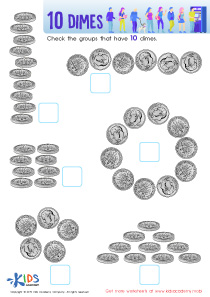Graph reading Worksheets for Kids
3 filtered results
-
From - To


Data: Assessment 2 Worksheet


Counting Types of Weather Worksheet


Pet Survey Worksheet
Question/Answer
Why is the Graph reading skill important for Kindergarten students?
Graph reading skill is vital for Kindergarten students because it introduces them to data interpretation, mathematical concepts like counting and comparison, and critical thinking. It lays the foundation for quantitative literacy, enabling young learners to visually understand and analyze information, fostering problem-solving abilities and preparing them for more complex math and science learning in their academic journey.
How to test a Kindergarten student’s Graph reading skills?
To test a Kindergarten student's graph reading skills, present them with a simple, colorful graph, such as a bar or pictograph, displaying familiar objects or subjects. Ask basic questions regarding the graph, like identifying which category has the most/least items, counting items in a category, or comparing numbers between categories, to assess their understanding and ability to interpret the graph.
What does the Graph reading skill mean when it comes to Kindergarten Numbers learning?
The Graph reading skill in Kindergarten Numbers learning refers to the ability of young children to understand and interpret simple graphical representations such as bar graphs or pictographs. It involves recognizing basic patterns, comparing quantities visually, and drawing simple conclusions from the graphed information. This skill lays the foundation for early mathematical reasoning and data interpretation.
 Assign to the classroom
Assign to the classroom


.jpg)









